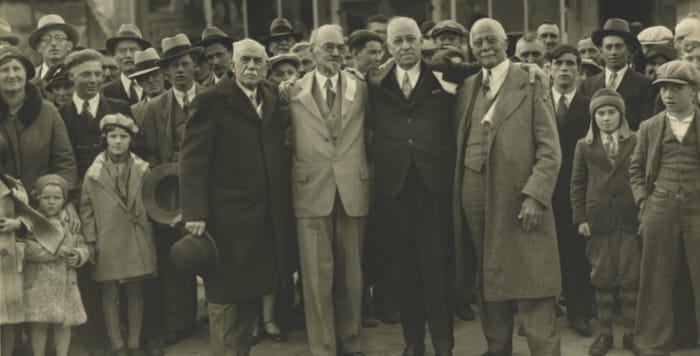Get ready to dive into the captivating world of papal names! You might be surprised to learn that five popes have chosen the rather unusual name “Sixtus.” In this intriguing article, we’ll explore the fascinating reasons behind this unique moniker. Join us as we unveil the historical context, symbolism, and lasting legacy of the name “Sixtus” in the realm of the Catholic Church.
Unpacking the History of “Sixtus”: A Papal Name with Layers
Have you ever noticed how popes choose new names when they take office? It’s a tradition stretching back centuries, and each name carries weight, often hinting at the pope’s goals or figures they admire from history. Take “Sixtus,” a name chosen by not one, not two, but five popes. What’s the story there?
The first Sixtus, Pope Sixtus I, ruled way back in the 2nd century. Historians think he might have gone with “Sixtus” because he was the sixth pope after St. Peter. It’s a practical choice, maybe even a bit symbolic, like saying, “I’m here, I’m part of this lineage.”
Fast forward a bit, and we meet Popes Sixtus II and Sixtus III. These two were likely drawn to the name because of a different historical figure: Saint Sixtus, a martyr of the early Church. Choosing his name could have been their way of saying, “We stand for courage and faith, even in tough times,” especially since they lived during periods when Christians faced persecution.
But things get even more interesting with the later Sixtuses. Pope Sixtus IV, who lived during the Renaissance, wasn’t just concerned with keeping the Church running; he wanted to make the papacy a major player on the world stage. Think art patronage (he’s the guy behind the Sistine Chapel, by the way), political maneuvering, and generally making sure everyone knew the pope was a force to be reckoned with. His choice of “Sixtus” could have been about more than just a saint; it might have been about aligning himself with the legacy of powerful popes from the past.
Then there’s Sixtus V, a reformer at heart. He took the reins during the Counter-Reformation, a time when the Catholic Church was reevaluating and restructuring itself. Sixtus V was all about cleaning up corruption, tightening up administration, and making sure the Church ran like a well-oiled machine. Choosing “Sixtus” might have been his way of saying, “I’m here to set things straight, just like some of my predecessors did.”
Looking at the five “Sixtus” popes, it’s clear that there’s no single, easy answer to why they chose that name. It’s probably a mix of personal belief, historical context, and maybe even a bit of strategy. Each Sixtus brought his own flavor to the papacy, shaping the Church and its role in the world in their own way. And that’s what makes exploring papal history so fascinating – it’s a window into the past, full of intrigue and open to interpretation.
Unveiling the Most Common Papal Name
You might think being elected Pope comes with the freedom to pick any name you like, right? Surprisingly, some names are way more popular than others. Since way back in 533 AD, a staggering 21 Popes have chosen the name John! That’s right, John is the all-time favorite papal name.
What makes John so special? Well, it holds deep meaning within the Christian faith. Think about it: John the Baptist was a key figure who paved the way for Jesus, and the Gospel of John is a cornerstone of the New Testament. So, when a Pope chooses the name John, he’s connecting himself to a powerful legacy of leadership and faith.
But hold on, John isn’t the only name with some serious papal clout. Benedict and Gregory are tied for a close second place, each boasting 16 Popes. Benedict, meaning “blessed,” might hint at the importance of monastic life and spirituality. And Gregory, meaning “watchful,” suggests a Pope’s duty to guide and protect their flock.
Picking a papal name isn’t just a random choice; it’s a deeply symbolic act. It’s like these Popes are saying, “I want to embody the spirit of these great figures who came before me.” Pretty cool, huh?
Decoding the Papal Name: A Legacy in the Making
After all the excitement dies down, and the white smoke has cleared, there’s a hush as the newly elected Pope steps onto the balcony for the first time. But before he addresses the world, he makes a choice, a choice with centuries of tradition behind it – he chooses his papal name. It’s not just a name, though; it’s a statement, a reflection of his hopes and dreams for the Church and the world.
So how do they pick these names? It’s a fascinating mix of personal reflection and historical awareness. You see, Popes often look back at those who came before them, finding inspiration in the legacies of their predecessors. It’s like a silent nod to the past, a way of saying, “I want to continue your good work.”
Think about John Paul II, for instance. He chose to honor not one, but two significant Popes – John XXIII, known for initiating the modernizing Second Vatican Council, and Paul VI, who saw those reforms through. It was John Paul II’s way of signaling his commitment to carrying the torch of progress within the Church.
Then there’s Benedict XVI, who drew inspiration from two very different figures – St. Benedict of Nursia, the founder of Western monasticism, and Pope Benedict XV, known for his tireless peace efforts during World War I. It suggested a desire for both spiritual reflection and global harmony.
And who can forget Pope Francis? His choice was a bold departure from tradition, a clear message right from the start. By taking the name of St. Francis of Assisi, the champion of the poor and the humble, he signaled a shift in focus, a renewed emphasis on simplicity, compassion, and caring for those often forgotten.
But it’s not just about honoring those who came before. Popes sometimes choose names with deep personal meanings, names that whisper of beloved saints, cherished family members, or even places that hold special significance. It’s a way of bringing a touch of their own lives and experiences into the papacy.
And of course, the historical context matters too. The name a Pope chooses can reflect the challenges faced by the Church and the world at that particular time. It can be a call to action, a message of hope, or a plea for unity in a fractured world.
The truth is, we can analyze and speculate all we want, but the heart of the decision remains a deeply personal one. It’s a moment of quiet contemplation for the newly elected Pope, a chance to connect with history, faith, and his own aspirations for the future. And as the world waits with bated breath to hear his chosen name, they know that this single word will echo through the halls of the Vatican and beyond, shaping the course of the Catholic Church for years to come.
The Popes Who Stood Alone: Exploring Unique Papal Names
We’ve talked about some of the more common names popes have chosen, names like John, Peter, and Gregory that echo through history. But what about the names that were only used once? It might surprise you to learn that there are a couple!
Take Pope Linus, for example. He was the second pope after St. Peter, and that’s the only time we’ve ever had a Pope Linus. Then, centuries later, Pope Lando took the papal throne in the year 913. His reign was short, just about a year, but his unique name has secured him a place in papal trivia. These one-time names highlight how each pope, through his choices, adds a new layer to the ongoing story of the papacy.
A Name That Made History: The Significance of Pope Francis
You might be surprised to learn that only one pope in history has ever chosen the name Francis. That’s right, just one! Before Jorge Mario Bergoglio became Pope Francis in 2013, the name “Francis” had never been used by any other pope.
So, what’s the story here? Why did this particular name resonate so strongly with him? Well, it all goes back to Saint Francis of Assisi. This beloved saint, who lived in the 13th century, was known for his incredible humility. He dedicated his life to serving the poor and even gave up his wealth to live a life of simplicity and devotion.
When Pope Francis chose this name, it was a powerful statement. It suggested that he, too, wanted to lead a life of humility and service, just like his namesake. It was a break from tradition, for sure, but it was also a bold declaration of his values and priorities.
The name Francis has become almost inseparable from the pope himself and his papacy. It’s a constant reminder of his commitment to the less fortunate and his desire to lead with compassion and humility.
Key Points:
- Five popes have chosen the name “Sixtus.”
- Sixtus I may have chosen the name to signify his position as the sixth pope after Saint Peter.
- Sixtus II and Sixtus III likely adopted the name in honor of Saint Sixtus, a martyr who symbolized courage and faith.
- Sixtus IV chose the name to align himself with powerful popes of the past and to elevate the papacy’s influence.
- Sixtus V selected the name to signify his commitment to reform and administrative efficiency.
- The choice of “Sixtus” represents a combination of personal beliefs, historical context, and strategic considerations.
- Each Sixtus pope left a unique mark on the papacy and played a significant role in shaping its history.
Understand lowball coins and learn about their impact on the economy.
- HelpCare Plus: Revolutionizing Affordable and Accessible Healthcare - December 29, 2024
- Boom & Bucket: Your Digital Marketplace for Used Heavy Equipment - December 28, 2024
- Ankle Bones Crossword Clue: Solutions, Tips & Anatomical Insights - December 28, 2024















1 thought on “The Mystery of Sixtus: Why Five Popes Chose This Name”
Comments are closed.